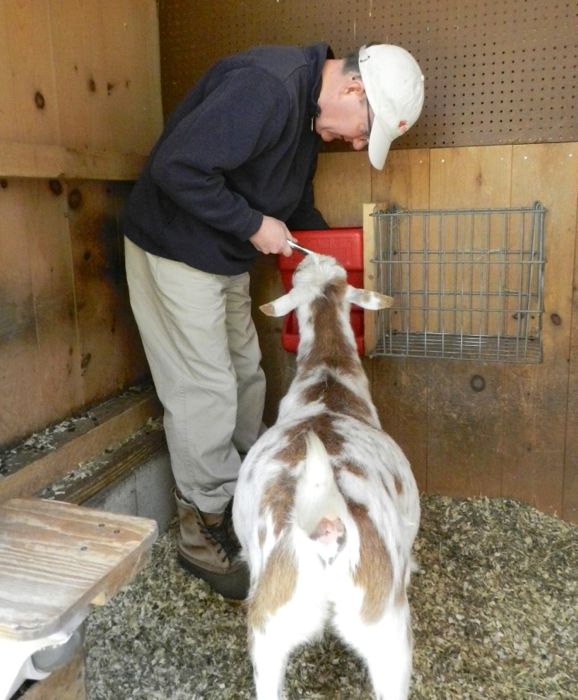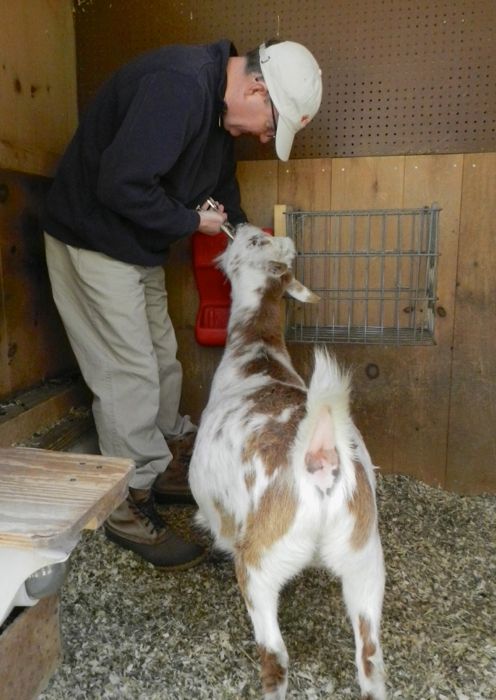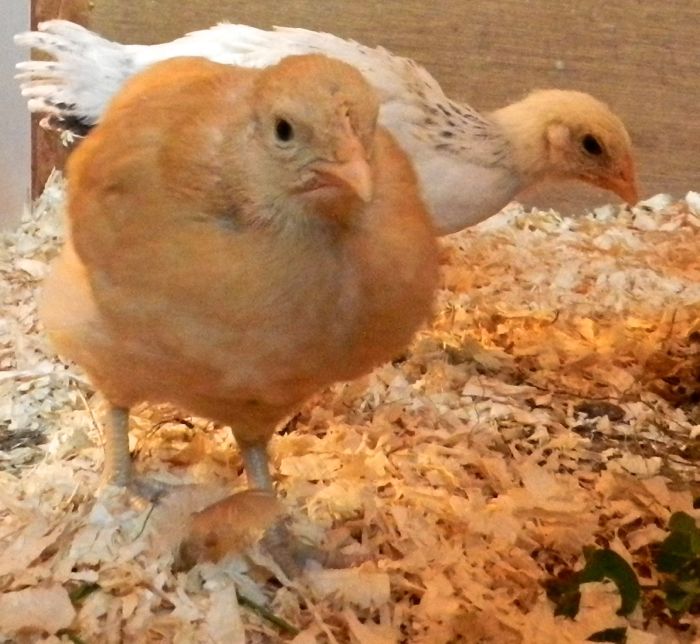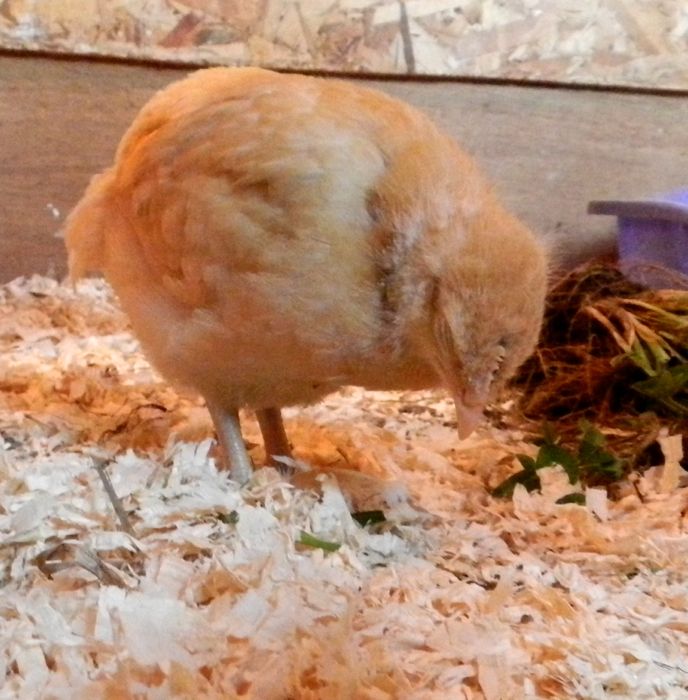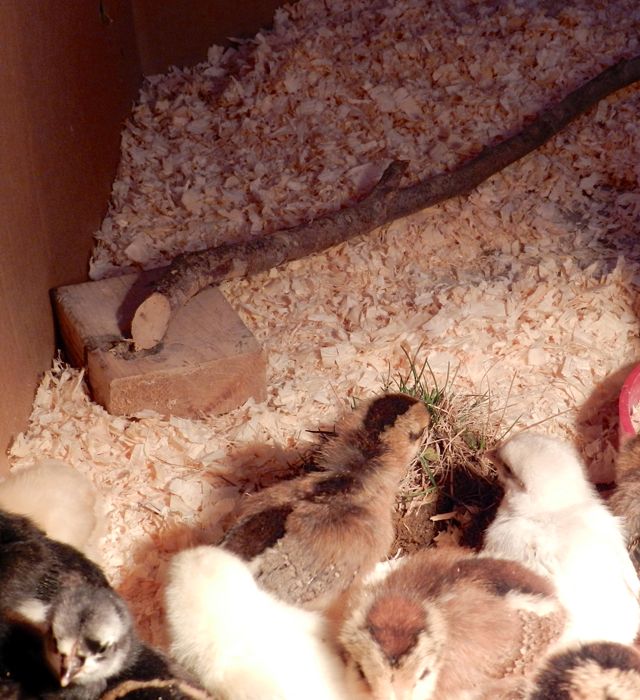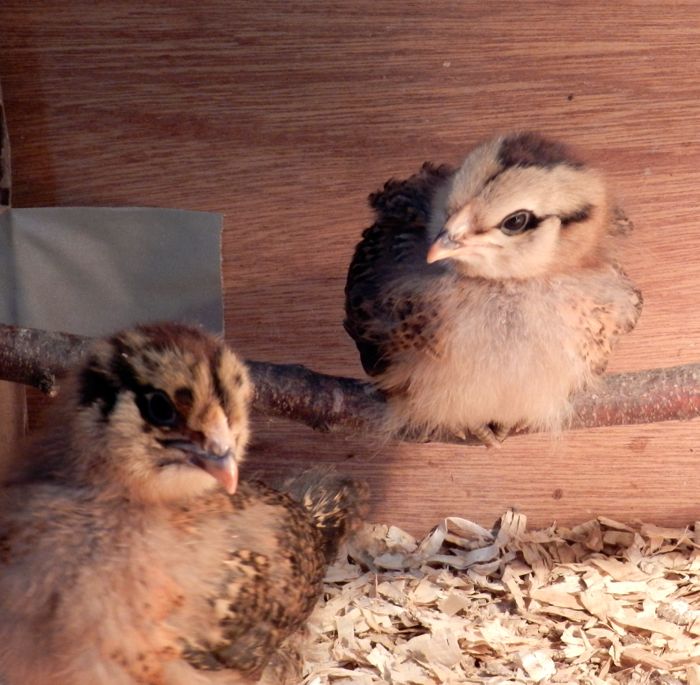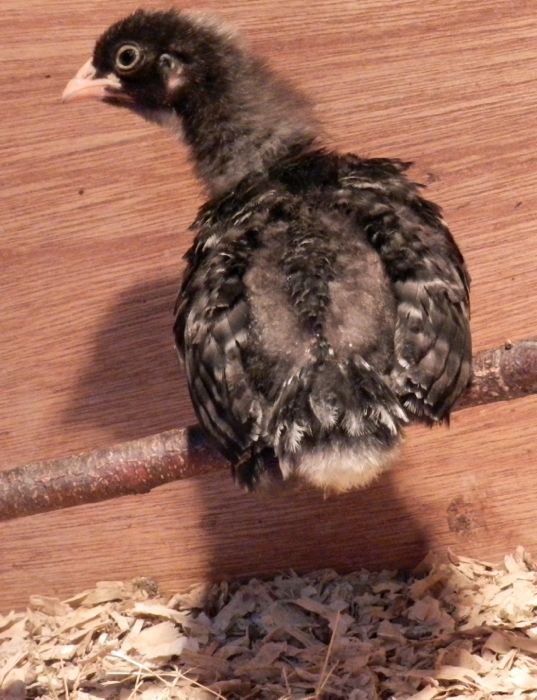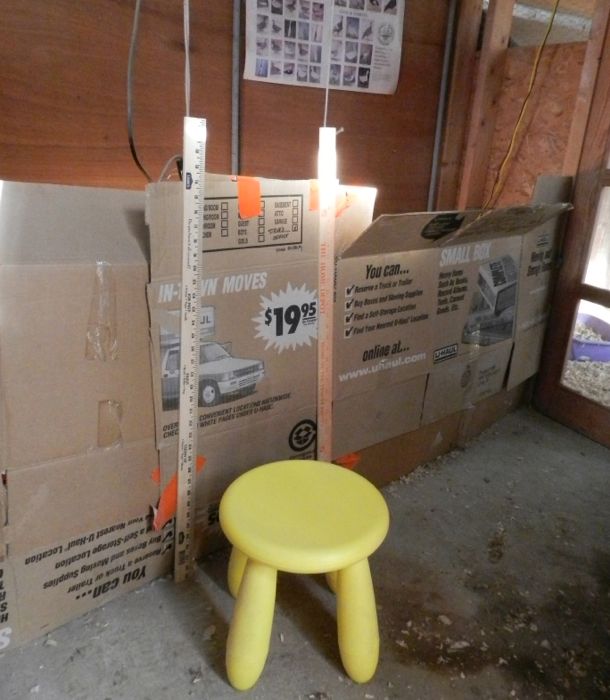Almost exactly two years ago I got a box of chicks in the mail. Happy Birthday, girls! Of those chicks, three were Buff Orpingtons. All of the chicks were named after Gems and these three became Amber, Beryl and Topaz. Amber is my ideal hen. She is friendly, calm and beautiful. During the season, she lays an egg about every other day. I take her to meet classrooms full of children who pet her. Beryl and Topaz are also beautiful. But they are also broody. All the time.

This is what they look like if you deign to remove them from their nests.
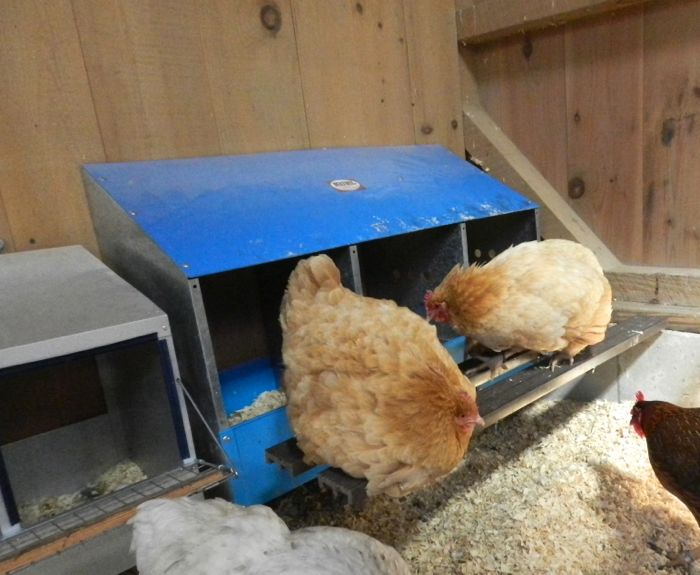
Here is a close-up of beautiful, broody Beryl.
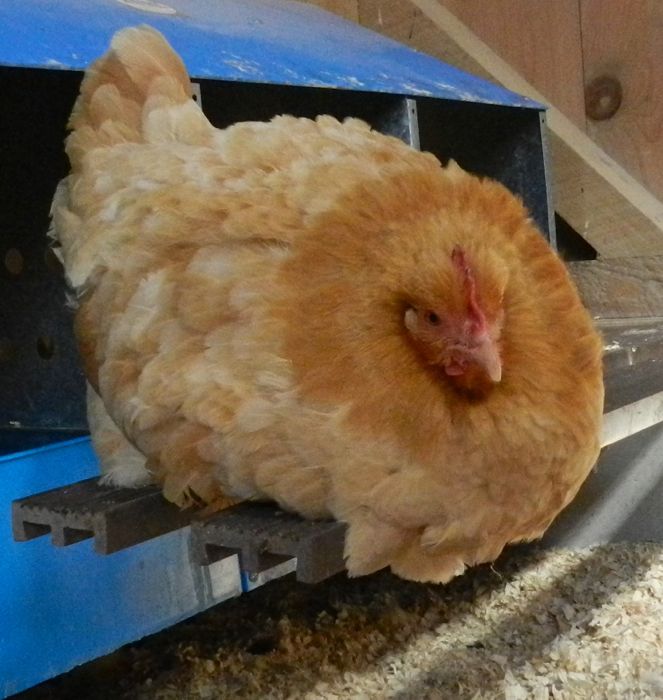
Unlike her sister, Amber, I cannot take this chuffed-up hen to storytimes. Nor does she lay eggs. It’s not a big deal to have a couple of useless broodies taking up space. I have enough nesting boxes.
But, a lovely woman named Kim loves Buff Orpingtons, broodiness and all. She also has a coop large enough to accommodate their quirks. Kim came to my Chicken Keeping Workshop last year so I know that she knows what she’s doing. Yesterday Kim and her friend, Diane, drove down from Maine to take my two Orps. She said hello to Agatha. From this photo you can tell she’s a good chicken person.

She gathered up Beryl.
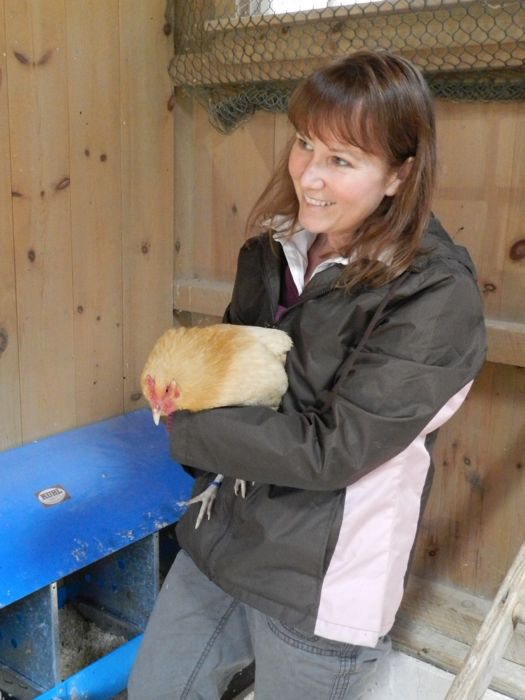
We carried the hens to the crate in her car.

Off the hens went to their new home. Kim lives near the ocean, so the hens will have cool breezes to keep them comfortable, even if they stay broody all summer. But, it looks like the change in scenery just might get them up and out and active.
They immediately took dust baths.

Then they surveyed their new realm.
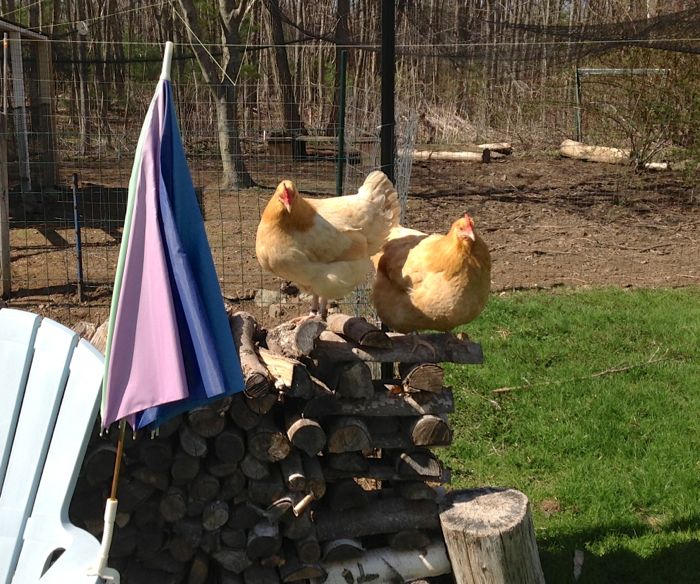
Beryl and Topaz are in the right place for them, and now I have the space to keep a couple more of the new chicks!
